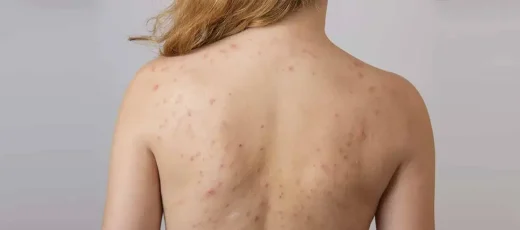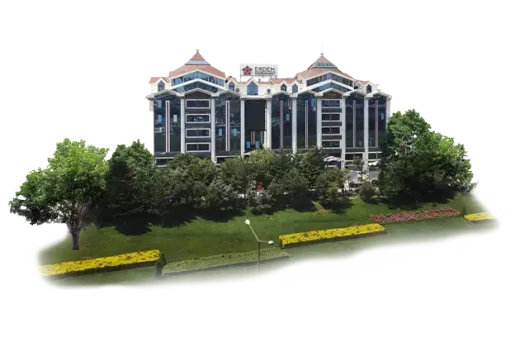Sweating is a natural and necessary part of life especially during exercise, hot weather, or stressful moments. But for many people, especially in the warmer months, it’s followed by an unpleasant side effect: acne on the back and chest. Known as “backne” or chest acne, this condition can be both frustrating and persistent.
If you’ve ever noticed small pimples, clogged pores, or even painful cysts appearing after intense sweating, you’re not alone. Understanding the underlying causes and how to treat them effectively is the first step toward clearer, healthier skin.

Why Does Acne Appear After Sweating?
Sweating itself doesn’t cause acne but it creates the perfect environment for it to thrive. When sweat mixes with bacteria, sebum (skin oil), and dead skin cells, it can clog pores. This buildup, especially when left on the skin for too long, leads to inflammation and breakouts.
Here’s how the process works:
- Sweat is secreted through pores, carrying toxins and salts out of the body.
- When mixed with oil and dirt, sweat can get trapped in tight clothing, sports bras, or backpacks.
- This leads to blocked pores, allowing bacteria like Cutibacterium acnes to multiply.
- The immune system responds with inflammation, resulting in red bumps, whiteheads, or even painful nodules.
Why Does Back Acne Get Worse in the Summer?
Back acne tends to flare up in the summer due to a combination of factors:
- Increased sweating from heat and humidity
- Tighter, synthetic clothing that traps moisture against the skin
- Less frequent clothing changes after sweating (especially while outdoors or at the beach)
- Greater exposure to sunblock or body oils, which can be comedogenic (pore-clogging)
In addition, friction from beach towels, backpack straps, or car seat covers can further irritate the skin, increasing the risk of breakouts in areas like the upper back, shoulders, and chest.
How to Treat Back and Chest Acne Caused by Sweat
Fortunately, there are multiple strategies both preventive and curative that can help reduce and treat sweat-related acne. Here’s a guide to what works:
1. Shower Immediately After Sweating
One of the most effective habits you can adopt is to shower as soon as possible after working out or sweating heavily. Use lukewarm water and a gentle body wash to remove sweat, oil, and bacteria.
If showering immediately isn’t possible, use body wipes or change into clean, dry clothes until you can cleanse your skin.
2. Use a Salicylic Acid Body Wash
Salicylic acid is a beta-hydroxy acid (BHA) that penetrates deep into pores to dissolve oil and debris. A body wash containing 2% salicylic acid can help:
- Unclog pores
- Reduce inflammation
- Prevent new acne from forming
Look for formulations labeled as non-comedogenic and fragrance-free if you have sensitive skin.
3. Try Benzoyl Peroxide Cleansers
Benzoyl peroxide is an antibacterial agent that kills acne-causing bacteria on the skin’s surface. A 4% to 10% benzoyl peroxide body wash can be highly effective against stubborn back and chest acne.
However, be cautious it can bleach towels and clothing, so rinse thoroughly and use white towels if possible.
4. Wear Breathable, Loose-Fitting Clothing
Tight, synthetic fabrics trap sweat and increase friction, which can lead to breakouts. Choose cotton, bamboo, or moisture-wicking fabrics that allow your skin to breathe.
If you’re exercising or spending time in the sun, always change out of damp clothing promptly.
5. Exfoliate Weekly, But Gently
Regular exfoliation can help prevent clogged pores but overdoing it can irritate the skin and worsen acne. Use a gentle body scrub or chemical exfoliant (like glycolic acid) no more than once or twice a week.
Avoid abrasive scrubs that contain crushed shells or large particles, which can create microtears in the skin.
6. Use Oil-Free Sunscreen and Body Lotions
Many sunscreens and body moisturizers contain pore-clogging ingredients. For acne-prone skin, opt for:
- Non-comedogenic sunscreen labeled “oil-free”
- Lightweight, gel-based moisturizers with calming ingredients like aloe vera or niacinamide
Some acne-safe sunscreens also include ingredients like zinc oxide, which can help calm inflammation.
Are Antibacterial Soaps Effective?
Antibacterial soaps may help reduce surface bacteria, but they are not always the best solution for acne. In fact, overusing antibacterial cleansers can:
- Disrupt the skin’s microbiome
- Lead to dryness and irritation
- Trigger more oil production, which worsens acne
Instead, dermatologists often recommend targeted acne cleansers (salicylic acid, benzoyl peroxide, sulfur-based soaps) over generic antibacterial soaps.
That said, if you have a history of folliculitis a condition where hair follicles become infected with bacteria using an antibacterial wash prescribed by a doctor (like chlorhexidine) can be helpful.
Should You Always Shower After Sweating?
In short, yes. Showering after sweating is critical if you’re prone to breakouts. Letting sweat sit on the skin for extended periods increases the risk of acne, especially in hard-to-reach areas like the back and shoulders.
Even a quick rinse can make a difference. If you’re not able to shower right away:
- Pat your skin dry with a clean towel
- Change into dry, breathable clothes
- Use salicylic acid pads or acne body wipes as a temporary measure
Making this a consistent post-sweat habit is one of the best preventive steps you can take.
Why It Happens and How to Manage It
The chest is particularly vulnerable to acne due to:
- Tight bras or compression garments
- Trapped sweat under the breasts or pectorals
- Hormonal fluctuations
- Residual body products, such as perfume or lotion
To manage chest acne:
- Avoid using fragranced body sprays or colognes directly on the chest
- Choose wireless bras or moisture-wicking sports bras for exercise
- Exfoliate the area once a week to remove dead skin
- Spot-treat breakouts with a sulfur-based cream or salicylic acid serum
If breakouts are frequent or severe, a dermatologist may prescribe topical retinoids or oral antibiotics for bacterial infections.
When to See a Dermatologist
Not all body acne clears up with over-the-counter solutions. You should consider visiting a dermatologist if:
- The acne is painful or cystic
- Over-the-counter products are ineffective after 8 weeks
- You’re left with scarring or dark marks
- The acne is affecting your confidence or mental health
Dermatologists can offer more intensive treatments like:
- Topical retinoids (adapalene, tretinoin)
- Oral medications (doxycycline, isotretinoin)
- Light or laser therapies
- Customized skincare regimens
Trust Your Skin to Medical Experts

If you struggle with persistent acne on the chest or back, especially acne triggered by sweat, professional support can make all the difference. At Erdem Hospital in Istanbul, dermatology specialists use evidence-based treatments to diagnose and manage even the most stubborn forms of body acne. With 37 years of experience and a patient-centered approach, the team focuses not only on clearing breakouts but also on preventing scarring and improving skin health long-term. Whether you’re seeking a clear complexion for summer or year-round confidence, Erdem Hospital provides medical-grade skincare solutions tailored to your body’s unique needs.